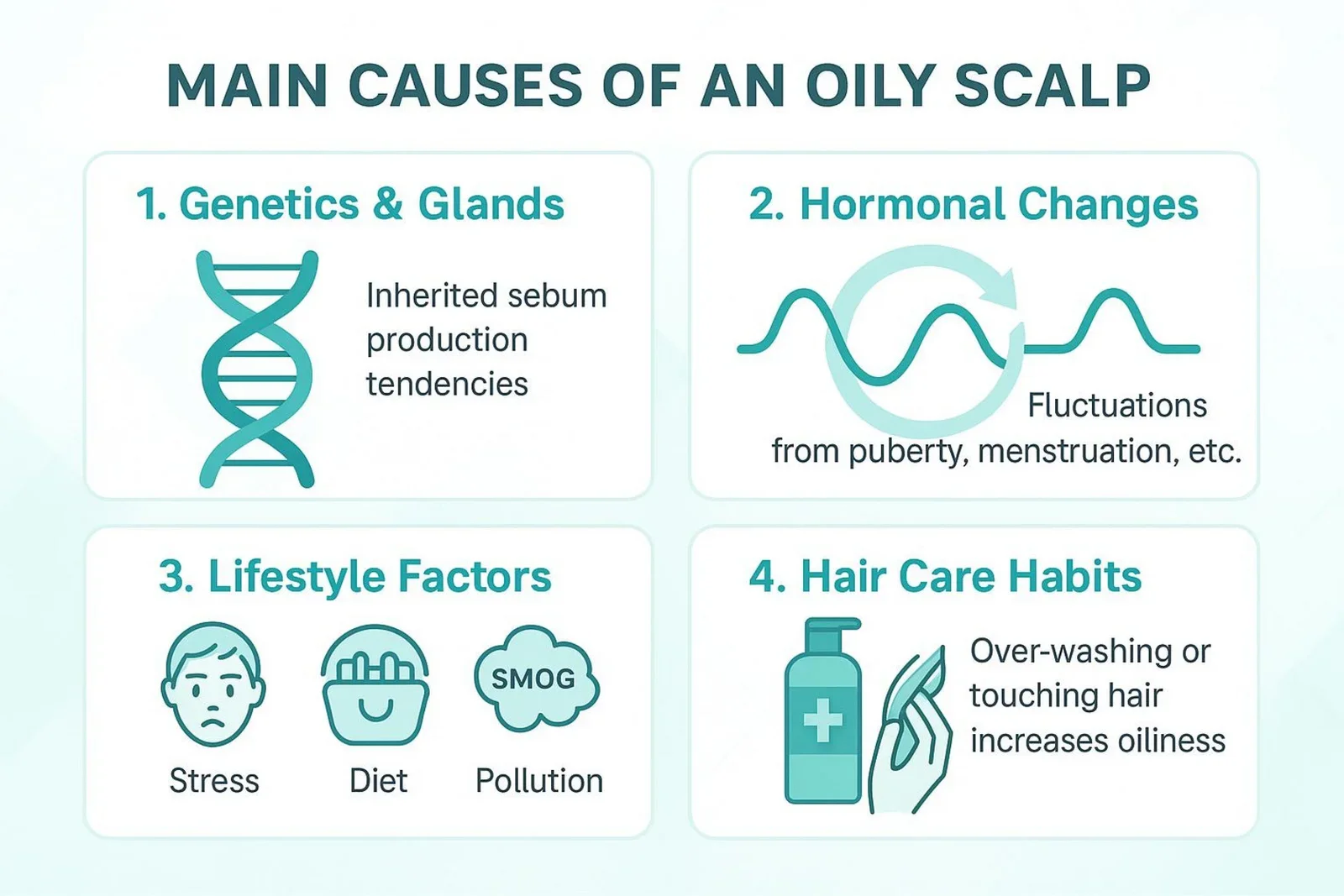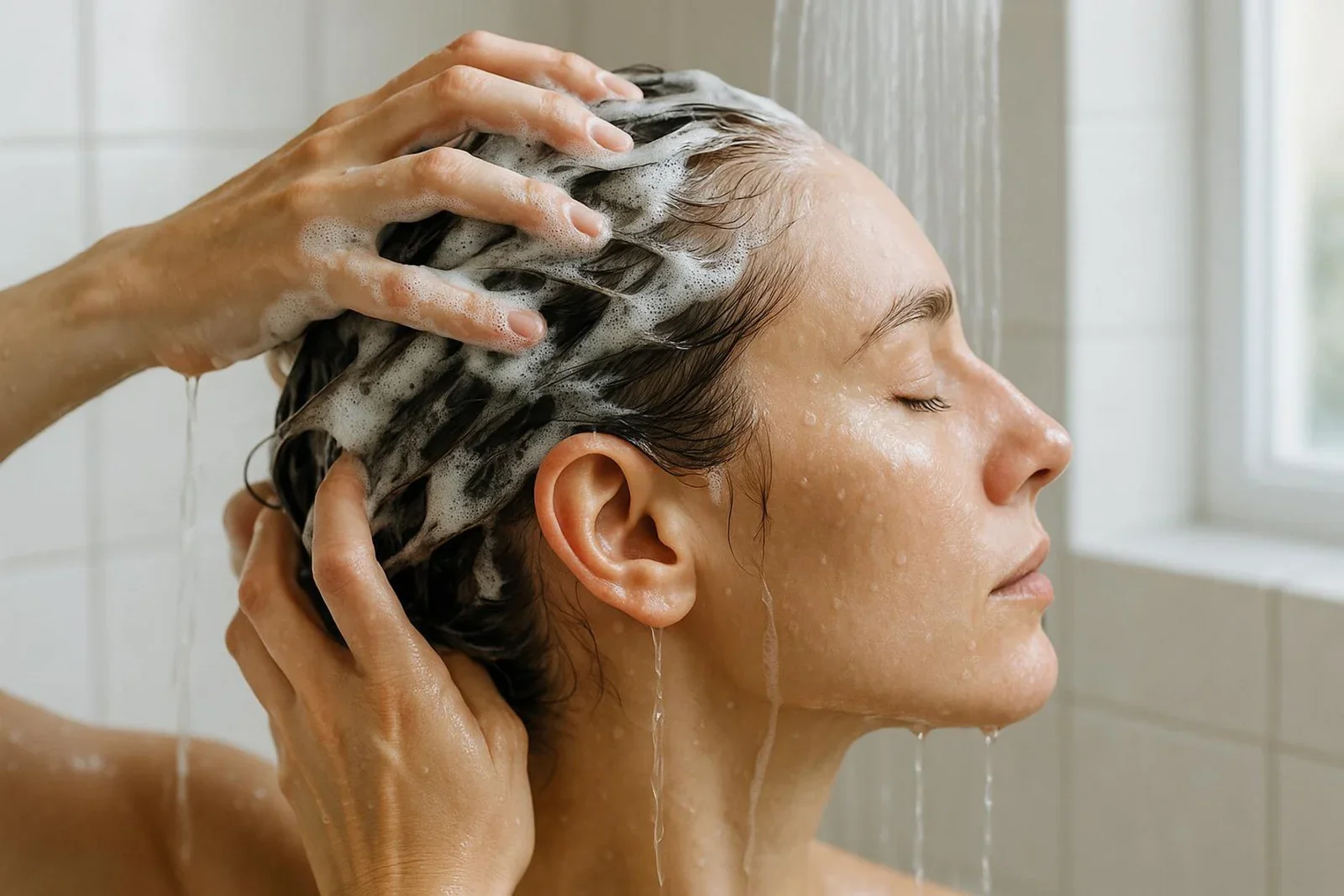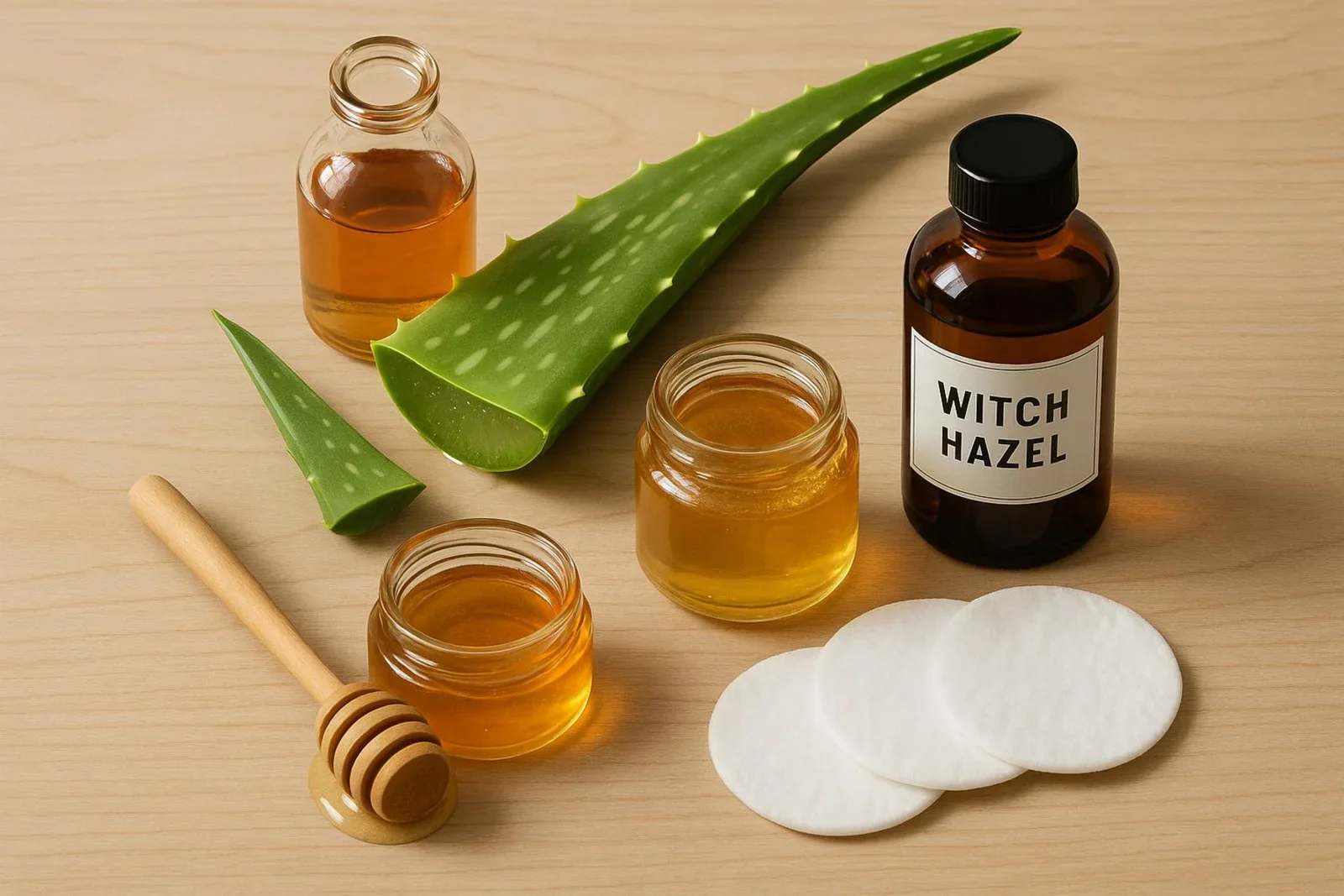No More Grease: Effective Treatments for an Oily Scalp
Waking up with an oily scalp can make your hair look flat and greasy, even after a fresh wash. The good news for Aussies is that you can manage it. Your scalp needs some natural oil (sebum) to keep hair healthy, but too much can lead to itchiness and issues like seborrheic dermatitis. With the right care, daily habits, and product choices, you can bring your scalp back into balance and enjoy cleaner, lighter hair. The key is to know why your scalp gets oily and use simple steps to keep it under control.
What Causes an Oily Scalp?
An oily scalp usually has more than one cause. Knowing what’s behind it helps you pick the right fix.
Overactive Sebaceous Glands and Genetics
The main driver of an oily scalp is the sebaceous gland attached to each hair follicle. These glands make sebum, the oil that protects and moisturises your scalp and hair, adds shine, and reduces damage. When glands are too active, they produce excess oil. Genes matter here. Just like hair colour or thickness, your genes can affect how big and busy these glands are. If oily scalps run in your family, you might be more likely to have one too.
Hormonal Fluctuations and Life Stages
Hormones strongly affect oil production. Changes in hormone levels during puberty, menstruation, pregnancy, and menopause can push your glands to make more sebum. Some medicines, including certain birth control pills, can also change hormone levels and influence scalp oil. This is why your scalp may behave differently at different times in life.
Scalp Conditions: Seborrheic Dermatitis and Others
Oily scalps can connect with skin conditions. Seborrheic dermatitis (often called dandruff) is common and can cause red, scaly, itchy patches in areas rich in oil glands. Extra oil can make dandruff worse. Eczema and psoriasis may also show up as red, flaky patches on the scalp and affect oil balance. Very oily skin can sometimes allow bacteria to thrive, which may lead to irritation or infections.
Environmental and Lifestyle Factors
Weather and habits also play a part. Humidity slows sweat evaporation, and as sweat moves through hair, it can spread oil, leaving hair dull and greasy. Sweat buildup can also encourage fungal and bacterial growth. Pollution and product residue can collect on the scalp and upset normal oil flow. Stress raises cortisol, which is linked to more sebum. Diet matters too: lots of sugar, refined carbs, and unhealthy fats may affect oil levels, while omega-3s and a balanced diet may help.
Hair Care Routine Mistakes That Contribute to Oiliness
Your routine can make things worse without you realising it. Common missteps include:
Washing too often, which strips oils and can trigger more oil production
Not washing enough, leading to product and dirt buildup
Using heavy conditioners or silicone-rich products on the scalp
Scrubbing aggressively, which can irritate the scalp
Touching hair often, over-brushing, or using dirty tools that spread oil
Lifestyle Changes to Reduce Scalp Oiliness
Small daily changes can support a healthier scalp and work alongside your hair care routine for steady results.
Diet and Nutrition: Do Certain Foods Affect Scalp Oil?
Food choices can influence skin and scalp health. Diets high in sugar, refined carbs, and unhealthy fats may increase oil. A balanced diet with omega-3 fatty acids, fruit, veggies, and lean proteins supports a better scalp environment. Swap processed snacks for nutrient-dense options. Drink plenty of water too, as good hydration helps the body keep a natural balance.
Managing Stress for Healthier Scalp Function
Stress does more than affect mood. It can raise cortisol and make the scalp oilier, and may flare acne on the scalp. Find ways to lower stress, such as breathing exercises, meditation, regular workouts, time outdoors, or hobbies you enjoy. Calmer days can lead to calmer roots.
The Role of Hydration and Exercise
Staying well hydrated supports your skin and scalp. When you’re dehydrated, your scalp may try to make up for it by producing more oil. Regular exercise improves blood flow and helps manage stress. If you sweat a lot during workouts, plan your washes around them. A quick post-gym shampoo can cut down oil spread and keep hair fresher.
Protecting the Scalp from Environmental Aggressors
Pollution and humidity can add to buildup and greasiness. Hats or scarves can shield your scalp outside, but they can also trap heat and spread oil if worn for long periods. If you wear hats or helmets for hours, wash your hair after. Simple protection and smart timing can help keep your scalp balanced.
Best Practices for Managing and Treating an Oily Scalp
Good results come from a steady, simple routine. It’s about what you use and how you use it.
Washing Frequency: How Often Should You Wash?
Daily washing might feel right, but it can backfire by stripping oils and prompting more sebum. Not washing enough causes buildup and greasy roots. The American Academy of Dermatology Association notes that very oily hair may need up to daily shampooing. Many people do well with washing two to three times per week to keep oils in check. If you’re a daily washer, try spacing washes out slowly to let your scalp adjust. Find the timing that suits your hair best.
Shampooing Techniques for Scalp Health
Focus on the scalp when you shampoo. Wet hair fully first. Apply a small amount of shampoo to roots and massage gently with your fingertips, not nails. This lifts oil and dead skin without irritating the scalp. Don’t scrub hard. Let the lather run through the lengths as you rinse instead of shampooing the ends directly. If you have heavy buildup, try a double cleanse: first wash to lift residue, second wash to clean the scalp well.
Proper Conditioning: Where and How to Apply
Conditioner is helpful but placement matters. Keep it off the scalp and roots. Apply a light conditioner to mid-lengths and ends, where hair dries out most. Rinse very well to avoid residue that can weigh hair down and make it look greasy or feel itchy. A little extra rinsing time can make a big difference.
Rinsing and Water Temperature Tips
Rinse out all shampoo and conditioner thoroughly to prevent buildup. Use lukewarm water for washing. Finish with a brief cool rinse to help the hair cuticle lie flat, which can boost shine and help your scalp feel calmer.
Keeping Brushes, Combs, and Tools Clean
Dirty tools move oil and product back onto clean hair. Remove shed hair from brushes after each use. Soak brushes and combs in warm water with a gentle cleanser or clarifying shampoo weekly. Wipe heat tools with alcohol to remove residue. Clean tools help keep hair fresher for longer.
Avoiding Over-Touching and Excessive Styling
Hands carry oil and dirt. Touching or playing with your hair spreads it to your roots. Heat styling can also make hair look greasy faster and may dry out strands, which can trigger more oil at the scalp. Let your hair air dry when you can. If you use heat, apply a heat protectant and use a low setting.
Scalp Care After Hats, Helmets, and Exercise
Hats, helmets, and headbands trap warmth and spread oils. Sweaty workouts do the same. Wash after intense exercise or long hours under headgear. Plan shampoo days around your busiest, sweatiest times. A silk liner under a helmet can help reduce oil transfer if you need to stretch time between washes.
Recommended Hair Care Products for an Oily Scalp
Choosing products can feel tricky when you’re trying to deal with greasy roots. The right formulas can help manage excess oil and keep hair feeling clean.
Choosing the Right Shampoo: Sulphate-Free, Clarifying, and Anti-Grease Formulas
Start with a shampoo that suits oily scalps. For frequent washing, pick sulphate-free shampoos that clean without stripping too much oil. Look for labels like “balancing” or “anti-grease.” Use a clarifying shampoo once a week to lift heavy buildup from products, pollution, and oils. Shampoos with ingredients like amino acids and kaolin clay (for example, Spécifique Argile Équilibrante Hair Cleanser Clay Shampoo) can purify without leaving hair dry.
Should You Use Conditioner with an Oily Scalp?
Yes-just use a light formula and apply it the right way. Keep conditioner away from the roots and focus on the ends. Rinse well. A lightweight conditioner can help keep hair hydrated without adding grease, and it may stop the scalp from trying to make more oil if your lengths are drying out.
Ingredients to Look For: Tea Tree, Green Tea, and Clay
Some ingredients are especially useful for oily scalps:
| Ingredient | How it helps |
|---|---|
| Tea tree oil | Antibacterial and antifungal effects; may ease dandruff and itch |
| Green tea extract | May help reduce sebum and support scalp comfort |
| Clays (bentonite, kaolin) | Absorb excess oil and remove buildup gently |
Find these in shampoos, scalp cleansers, or tonics aimed at greasy roots.
Ingredients to Avoid: Silicones and Heavy Oils
Some ingredients can weigh hair down and add to grease:
Silicones (like dimethicone, cyclomethicone, amodimethicone) can build up, add a slick look, and block moisture from entering the hair shaft.
Heavy oils and rich masks on the scalp can clog follicles and leave hair limp.
Pick light, water-based products instead, and keep richer treatments away from the scalp.
Is Dry Shampoo Right for You or Making It Worse?
Dry shampoo can help between washes by soaking up oil and adding a cleaner look and feel. Use it sparingly. Most leave residue that can feel gritty if used too often. They don’t replace regular washing. Overuse can clog follicles and irritate the scalp. Use for a day or two at most, then wash it out well.
Natural Remedies and At-Home Treatments
If you prefer simple home options or want extra support, a few natural remedies may help control oil and calm the scalp.
Apple Cider Vinegar Rinses for Sebum Balance
When diluted, apple cider vinegar (ACV) can remove buildup and help balance scalp pH. Some people find it reduces oil and frizz and soothes irritation. Mix one part ACV with two parts water and apply after shampooing. Leave for a few minutes, then rinse well. If you have a sensitive scalp or eczema, patch test first to avoid irritation.
Benefits of Aloe Vera and Honey Masks
Aloe vera gel can soothe the scalp and hydrate without a greasy feel. Apply pure gel to the scalp for 15-30 minutes, then rinse. Honey has natural antibacterial and antifungal properties and may help if you have dandruff with oiliness. A 2023 study found a topical mix with honey, probiotics, turmeric, and vitamin B12 helped reduce signs of seborrheic dermatitis in children, including excess oil. For a simple mask, thin honey with a bit of water, apply for 20-30 minutes, and rinse thoroughly.
Scalp Soothing with Witch Hazel
Witch hazel is a mild astringent that can ease itch, calm redness, and help tighten oil-producing pores. Dab it on the scalp with a cotton pad after washing, or dilute with water as a rinse. It’s often gentle enough for sensitive skin.
DIY Dry Shampoo Alternatives
Between washes, you can use pantry options to absorb oil. Sprinkle a little cornstarch or baby powder onto roots, wait a few minutes, then brush through. For dark hair, mix in a bit of cocoa powder to avoid a white cast. Use occasionally and wash out at your next shampoo.
Frequency and Safety Tips for At-Home Remedies
Use masks and rinses, like clay, aloe, or ACV, about once a week to avoid over-drying. Always dilute essential oils such as tea tree, rosemary, or peppermint in a carrier oil, and use them no more than one to two times weekly. Avoid daily use of strong DIY mixes. Patch test new products or ingredients, especially if you have sensitive skin or allergies. Home remedies can help, but they don’t replace medical care for ongoing or severe scalp problems.
When to Seek Advice from a Professional
Many people can manage an oily scalp at home, but sometimes you need extra help to sort out the cause.
Signs You Should See a Trichologist or GP
If your scalp is greasy again within 12-24 hours of washing, or if you have itch, redness, heavy flaking, or burning along with oiliness, book an appointment. A trichologist can assess your scalp and suggest a treatment plan. Your GP can check for health issues, recommend over-the-counter options, or refer you to a dermatologist.
Is Medication or Prescription Treatment Needed?
For severe cases, you may need medicated shampoos or topical treatments. Options your doctor might suggest include ketoconazole, selenium sulfide, or corticosteroids for inflammatory conditions like severe seborrheic dermatitis. Some long-term scalp issues may need ongoing care. Follow your clinician’s directions closely to avoid irritation or side effects. Seek help if oily scalp symptoms affect your daily life.
Steps Forward: Building a Scalp Care Routine That Works
Getting a handle on an oily scalp takes steady habits and small tweaks as your needs change. Aim for a routine you can keep up long term.
Establishing Consistent Habits for Long-Term Results
Stick with the products and methods that work for you. Keep a regular wash schedule, focus shampoo on the scalp, condition only the lengths and ends, and rinse well. Clean your tools often and try not to touch your hair too much. Give it time-many people see clearer results after 30-60 days of consistent care.
Adjusting Your Routine with Changing Seasons
Your scalp may act differently in humid summers versus cool, dry winters. In hot, sweaty weather, you may need to wash a bit more often, add a weekly clarifying shampoo, or choose more oil-absorbing products. In drier months, avoid over-drying the scalp, which can trigger more oil. Small seasonal tweaks can help keep balance year-round.
Tracking Results and Personalising Your Scalp Care
Everyone’s scalp is different. Pay attention to what extends time between washes, which products keep roots fresher, and what calms itch or flakes. Keep simple notes if helpful. Try new products one at a time so you know what works. Some salons offer free hair and scalp checks, and online quizzes can point you to options that fit your needs. Build a routine that suits you and stick with it for steady, grease-free results.
Do you live in Sydney?
Get the perfect look at our salon – schedule your appointment now!
Our Services
Check Out Our Instagram
Check out our instagram
Check out our instagram and see our latest posts!
Check out our facebook
Check out our facebook and see our latest
posts!











